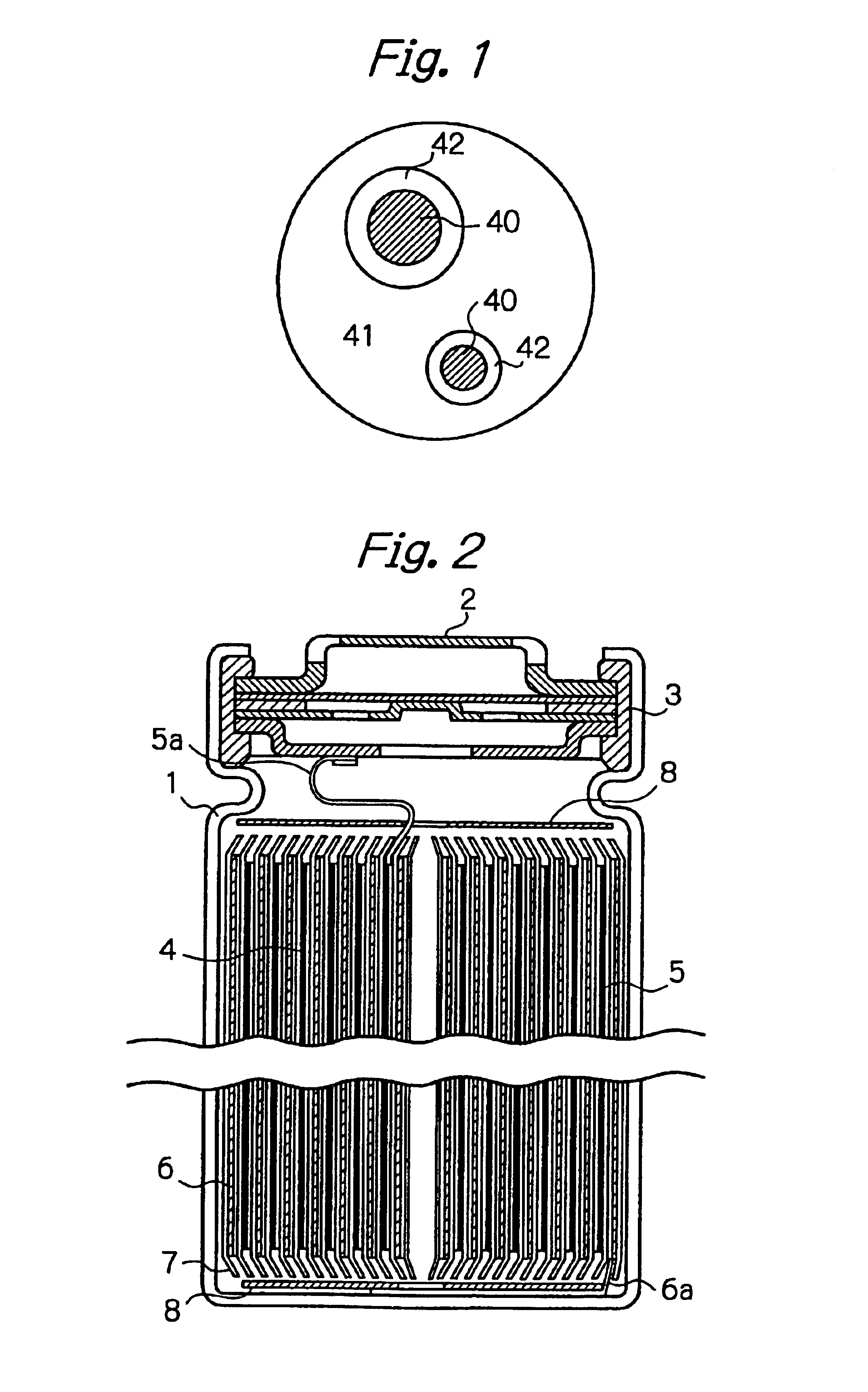Negative electrode material for a non-aqueous electrolyte secondary battery and processes for its manufacture
a secondary battery and negative electrode technology, applied in the manufacturing process of electrodes, cell components, electrochemical generators, etc., can solve the problems of short charging and discharging cycle life, powderization or comminution, and inability to meet the requirements of the battery
- Summary
- Abstract
- Description
- Claims
- Application Information
AI Technical Summary
Benefits of technology
Problems solved by technology
Method used
Image
Examples
example 1
This example illustrates the case in which a negative electrode material according to the present invention is manufactured in accordance with the above-described Manufacturing Process 1 (rapid solidification method). The gas atomization, the single-roller quenching, and the plasma rotating electrode method were used as cooling methods.
First, the solidification speed or the cooling rate at the time of solidification of each method was measured using an Al-4 wt % Cu alloy.
[Measurement of Cooling Rate]
(Single-roller Quenching)
A single roll comprising a core made of carbon steel with a diameter of 20 mm and an outer peripheral portion made of Cu with a thickness of 10 mm was rotated at a rotational speed of 2,000 rpm. A molten raw material of an Al-4 wt % Cu alloy was dropped on the circumferential surface of the roll and solidified. The solidified material was observed with an optical microscope to measure the distance between secondary arms of dendrite, and the cooling rate was deter...
example 2
Using an Ni-52 wt % Si alloy, a negative electrode material was manufactured by gas atomization in the same manner as described in Example 1 except that the heat treatment temperature was changed. The average diameter of the Si phase grains of the resulting negative electrode material and the negative electrode test results are shown in Table 3 together with the heat treatment temperature.
As shown in Table 3, in the inventive process in which the heat treatment temperature was at least 10.degree. C. below the solidus temperature of 993.degree. C. of NiSi.sub.2, which is the primary intermetallic compound formed during solidification of an Ni-52 wt % Si alloy, the average diameter of Si phase grains was no more than 40 .mu.m, and the cycle life in each case was at least 90%. In contrast, in the comparative method in which heat treatment was performed at a temperature 8.degree. C. below the solidus temperature, the average diameter of Si phase grains exceeded 40 .mu.m due to the growt...
example 3
A negative electrode material was manufactured by gas atomization in the same manner as described in Example 1 except that the composition of the Ni--Si alloy raw material (expressed as wt % of Si) was changed (with heat treatment at 900.degree. C. for 4 hours, or without heat treatment). The average diameter of the Si phase grains of the negative electrode material which was obtained and the results of the negative electrode tests are shown in Table 4.
As shown in Table 4, regardless of whether heat treatment was carried out or not, as the weight ratio represented by Si phase grains increased, the discharge capacity increased but the proportion represented by the enveloping material which restrains volume changes decreased, so the cycle life had a tendency to gradually decrease. Furthermore, for the same amount of Si, the material which had been heat treated had a lower discharge capacity, but it had a somewhat higher cycle life. However, compared to a presently used carbon electrod...
PUM
| Property | Measurement | Unit |
|---|---|---|
| particle diameter | aaaaa | aaaaa |
| particle diameter | aaaaa | aaaaa |
| particle size | aaaaa | aaaaa |
Abstract
Description
Claims
Application Information
 Login to View More
Login to View More - R&D
- Intellectual Property
- Life Sciences
- Materials
- Tech Scout
- Unparalleled Data Quality
- Higher Quality Content
- 60% Fewer Hallucinations
Browse by: Latest US Patents, China's latest patents, Technical Efficacy Thesaurus, Application Domain, Technology Topic, Popular Technical Reports.
© 2025 PatSnap. All rights reserved.Legal|Privacy policy|Modern Slavery Act Transparency Statement|Sitemap|About US| Contact US: help@patsnap.com


